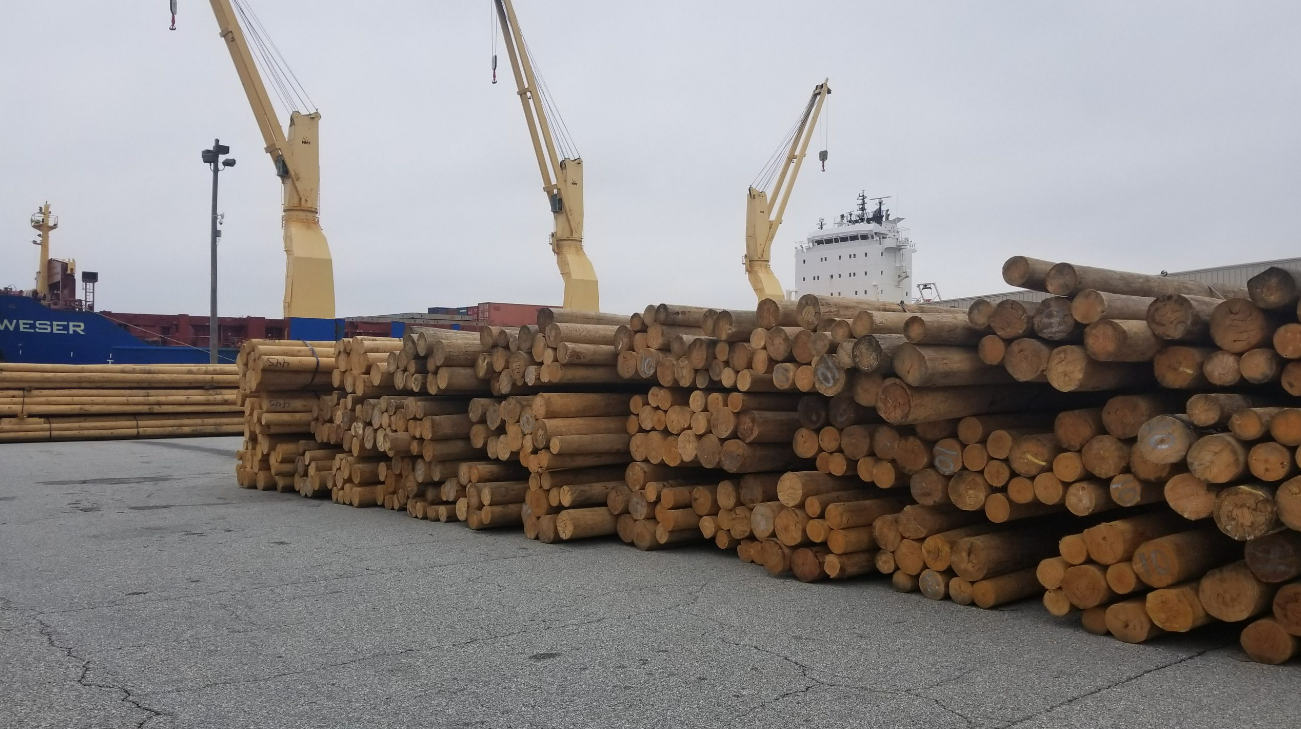Wood utility poles are an important part of the power distribution network. They are what keep the lights on and our phones connected.
But just like anything that gets damaged after staying outdoors for long periods of time, wooden utility poles get worn down by rain, pests, and mold after staying outside.
Maintaining these poles with the right treatments and strategies is the key.
In this detailed article, we will guide you through all the ways we can treat these poles so they last a lifetime and save money in the long run.
Let’s dive in.
Pick the Appropriate Wood for Poles
Choosing the right wood species is the single best thing you can do to ensure the longevity and safety of wooden poles.
That’s because different wood types offer different levels of resistance against decay or insects.
A popular choice is Southern Yellow Pine, which is super strong and resists rot naturally, making it a favorite for heavy-duty poles.
Douglas Fir is another favorite as it’s strong but not too heavy. This wood is perfect when poles need to hold a lot of weight without being bulky.
At Gulf South Forest Products, we use both of these wood species to manufacture our poles. Read more on it here.
Last but not least is Western Red Cedar. It’s another excellent option that is highly resistant to rot, bugs, and any kind of weather. Thanks to the special oils it has, it stays strong and healthy for a long time.
Plus, it looks great, so it’s a popular choice for parks and gardens too.
Right Harvesting and Processing Techniques
Before becoming a power pole, a tree needs to be healthy and strong. Here’s how we can make sure:
- Choose mature trees with the desirable characteristics while leaving younger ones so they can grow tall.
- Expert loggers use special techniques like directional telling to gently knock down the trees without hurting any others nearby.
- Once the trees are down, carefully move them to avoid any bumps or stresses.
Moisture Content Considerations
Just like medicine works best on an empty stomach, wood needs to have just the right amount of moisture before treatment. We air dry or subject them to a kiln to take out any extra moisture.
This step is important because if the wood is too wet, the treatment can’t soak in properly, leaving it vulnerable to rot and bugs. And if it’s too dry, it might not absorb the treatment evenly.
We use special tools to check the wood’s moisture level. Additionally, by picking good wood, handling it carefully, and getting it prepped just right, we set the stage for strong, long-lasting poles.
Treatments with Chemical Preservatives
We treat wood poles with various chemical preservatives to resist decay and insects. Common treatments include creosote, pentachlorophenol, and copper naphthenate.
The goal of these substances is to penetrate the wood and provide long-lasting protection.
Here is a short overview of some of the treatments we use at Gulf South Forest Products:
Chromated Copper Arsenate (CCA)
Contains copper, chromium, and arsenic compounds that protect against decay fungi, termites, and pests. It’s effective but faces environmental concerns due to arsenic leaching.
Alkaline Copper Quaternary (ACQ)
Combines copper with quaternary ammonium compounds, offering protection against decay, fungi, and insects without the risks of arsenic and chromium. It’s a safer alternative to CCA
Creosote
Made from coal tar, it prevents fungal attacks and insect infestations and provides long-lasting weathering resistance.
No matter which treatment we use, safety is always a priority. We follow strict rules to protect everyone involved and minimize any impact on the environment.
Treatment with Pressure Treatment
This treatment would be equivalent to giving your wood a deep soak.
In this treatment, we use vacuum and pressure cycles to impregnate wood poles with preservatives to improve their durability.
First, we take out any air or moisture that might be hiding inside the wood. This creates tiny spaces for the treatment to fill later.
Then, we use pressure to force the treatment solution deep into those tiny spaces, soaking the wood all the way through.
Once the pole is soaked, we dry it out carefully using a kiln or letting it air dry naturally. This removes any extra moisture and helps the treatment work its magic for a long time.
Treatment with Thermal Modification
Another way to maintain wood stability is by subjecting it to extremely high temperatures. Thermal modification offers two key benefits but is usually offered in Europe:
- The treatment significantly reduces swelling and shrinking caused by changes in humidity. This helps prevent warping or cracking in the poles over time.
- The high heat alters the wood’s structure which makes it less attractive to fungus and insects, thus improving its resistance to decay.
Some Environmental Considerations
Treating poles is important, but doing it eco-friendly is even better. Here are some green tips to consider:
- First and foremost, choose treatments that minimize rot and bugs but are kind to the environment. Look for products that have been approved by environmental groups.
- Make sure the wood comes from forests that are being replanted responsibly.
- Only use the chemicals sparingly and follow the instructions carefully to avoid waste.
- Whenever possible, explore natural ways to keep weeds and bugs away from the poles
In Essence…
In this article, we learned a bunch of ways to maintain the longevity of wood utility poles. Some treatments make them super strong against rot, while others keep insects and pests away.
However, the important thing to keep in mind is, there’s no single perfect solution. You can always assess the situation and apply the most relevant treatment.
Good news is, the wooden pole industry is always coming up with new ways to protect these poles.
Here at Gulf South Forest Products, we take pride in using the latest and most effective treatments on our poles. This keeps them strong, reliable, and ready to serve your community for a long time.
Contact us today to discuss your needs and request a quote.





